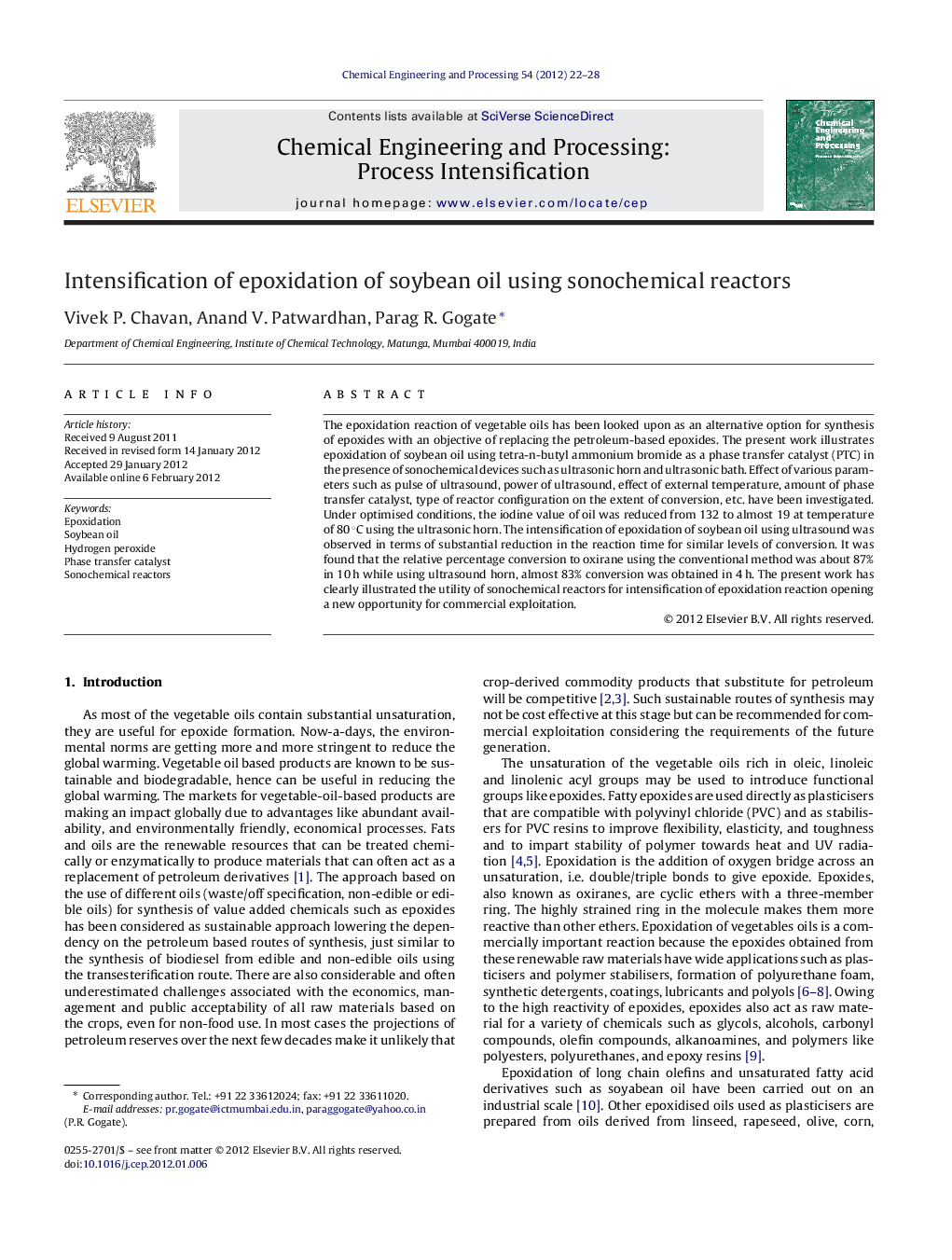| Article ID | Journal | Published Year | Pages | File Type |
|---|---|---|---|---|
| 687536 | Chemical Engineering and Processing: Process Intensification | 2012 | 7 Pages |
The epoxidation reaction of vegetable oils has been looked upon as an alternative option for synthesis of epoxides with an objective of replacing the petroleum-based epoxides. The present work illustrates epoxidation of soybean oil using tetra-n-butyl ammonium bromide as a phase transfer catalyst (PTC) in the presence of sonochemical devices such as ultrasonic horn and ultrasonic bath. Effect of various parameters such as pulse of ultrasound, power of ultrasound, effect of external temperature, amount of phase transfer catalyst, type of reactor configuration on the extent of conversion, etc. have been investigated. Under optimised conditions, the iodine value of oil was reduced from 132 to almost 19 at temperature of 80 °C using the ultrasonic horn. The intensification of epoxidation of soybean oil using ultrasound was observed in terms of substantial reduction in the reaction time for similar levels of conversion. It was found that the relative percentage conversion to oxirane using the conventional method was about 87% in 10 h while using ultrasound horn, almost 83% conversion was obtained in 4 h. The present work has clearly illustrated the utility of sonochemical reactors for intensification of epoxidation reaction opening a new opportunity for commercial exploitation.
► Intensification of epoxidation of soybean oil using ultrasound. ► Substantial reduction in the reaction time for similar levels of conversion. ► Effect of external temperature is marginal under ultrasonic irradiations. ► Glycol content can be effectively controlled by adjusting the operating parameters.
